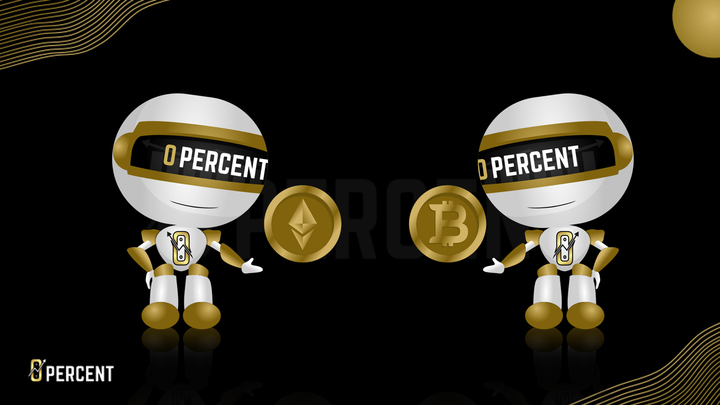What Are My Options?
As it pertains to investing in crypto, there are several options to consider. One popular crypto investing strategy is known as HODL. HODL is an intentional misspelling of the word “hold” and refers to the practice of buying a crypto and simply holding it over the long-term. The idea behind HODL is that instead of wasting time, energy and resources buying and selling the coin on the highly volatile crypto market, over time the coin will increase in value, and so “HODLing” the coin will eventually and inevitably bring financial gains.
Another popular option is to trade crypto on the market. Hardly a groundbreaking strategy, this involved buying and selling crypto on an exchange and ideally profiting from those trades. This method is risky, but offers a large potential reward. Trading on crypto exchanged requires a good understanding of market trends, current events, the underlying technology behind the coin you are trading, and the ability to make quick decisions.
How Do I Get Started?
Before you begin trading crypto, you will need to set up what is known as a digital wallet. This digital wallet will electronically store the crypto you own, and there are several types of digital wallets, each with their own set of advantages and disadvantages. The most common types of digital wallets are mobile and hardware wallets.
Mobile wallets are the type of wallet you set up when you open an account with a crypto exchange, for example Coinbase. Your crypto is stored on this wallet and in order to access it you will need to maintain an account with that exchange. An advantage with this type of wallet is that you can access the wallet from anywhere in the world — so long as you have an internet connection and can access your account. However, the downside is that your digital wallet may be vulnerable to cyber attack.
Hardware wallets are physical hard drives that store your digital currency offline. While hardware wallets are the most secure method of storing your digital assets, they come with the significant risk of being lost or stolen. If you lose the hard drive, you lose your assets, and there is no way to recover those losses short of recovering the physical drive. Furthermore, a hard drive that contains any significant amount of currency should be encrypted. In case the hard drive is stolen or otherwise accessed without your authorization, the encryption will help to ensure that the digital assets are not removed from the drive. However, if you lose or forget your encryption password, then there may never be a way to recover the content of your hardware wallet.
Once you have your digital wallet set up and secured, you can get started buying and selling crypto, though it would be wise to do thorough research before diving head first into the crypto exchange. Each coin has its own monetary value, function, and potential risks and rewards.
Once you have a good idea what crypto is and which coins you want to invest your money in, you can go ahead and choose a reputable crypto exchange, for example Coinbase or Binance, and begin trading.
The Crypto Market
It is important to note that the crypto market is notorious for its volatility. Prices can swing to spring high or very low lows, and these fluctuations can oftentimes be quite sudden. There is no sure fire way to ensure that you won’t lose money, just as there isn’t a way to ensure this as with the traditional stock market. However, having a diversified portfolio of coins you understand, and subsequently keeping up with current events and making sure to incorporate a long-term investment strategy as well, will help to potentially mitigate significant financial losses. Investing in crypto carries inherent risk, and diversifying not only the crypto you purchase, but your investment strategies as well, is generally a safer route to take than simply relying on one coin, or on one investment strategy.
When investing — and this holds true whether you invest in crypto or stock — always make sure that you are being financially responsible. Only invest what you can afford. Specifically, this means only investing an amount of money that you can afford to lose, in the worst case scenario that you lose 100 percent of your investment (which is entirely possible when investing in crypto).
Investing in crypto can feel overwhelming, given the fact that there are over 22,000 cryptos out there. If you feel like it’s simply too much information to retain, then go back to the basics, and study the most popular coins, like Bitcoin, Ethereum and Litecoin. Once you have a firm understanding of those coins and their underlying technologies, you can explore some other widely used coins like Cardano and Solano.
Cryptos Worth Mentioning
Bitcoin
Bitcoin is the first and most well known cryptocurrency, as well as the coin the holds the most monetary value. Created in 2009, it is now accepted as legal tender in some countries. Currently, there are approximately 13 million Bitcoins in existence, and that number will gradually increase to 21 million, but will not exceed that number. Bitcoins are generated through a process called mining. 0 Percent is an active player in crypto mining, and we offer our Cryptocurrency Income Accelerator where you can mine cryptocurrency yourself, without needing the expertise or the hardware yourself! You can check out our CIA program at https://bit.ly/3IqCWas!
Ethereum
Ethereum is arguably the second most well known and held cryptocurrency. Ethereum is a decentralized platform that runs smart contracts, or applications that execute functions or financial transactions exactly as they are coded into the contract. Ethereum is the second largest cryptocurrency by market capitalization.
Cardano
Cardano is a blockchain platform that enables secure and scalable applications. Designed to support dApps, or decentralized apps, and smart contracts, Cardano places its focus on security.
Solano
Solano is a blockchain platform that enables high speed and low cost transactions. Designed to be energy efficient, Solano is an important decentralized platform in both finance and gaming.
Top 10 Cryptocurrencies by Market Capitalization
If you are interested in broadening your knowledge of cryptocurrencies, looking at the top coins by market capitalization would be another good place to start. There are over 22,000 cryptocurrency projects in existence, with a total market capitalization of just over $980 billion. These are the top 10 cryptocurrencies, based on their market capitalization:
- Bitcoin (BTC) – With a market cap of $322.3 billion, Bitcoin (BTC) is the original cryptocurrency. It uses a distributed ledger, called a blockchain, to verify transactions and prevent fraud. In May 2016, one BTC was worth around $500, but by January 2023, its value had increased to approximately $16,741, a growth of 3,248%.
- Ethereum (ETH) – Ethereum is both a cryptocurrency and a blockchain platform, known for its use in smart contracts and non-fungible tokens (NFTs). Its market cap is $149.0 billion. From April 2016 to the end of January 2023, its price rose from around $11 to around $1,218, an increase of around 10,970%.
- Tether (USDT) – Tether is a stablecoin, meaning it is backed by fiat currencies like U.S. dollars, Euros, or Yen and aims to maintain a value equal to one of those denominations. Its market cap is $66.2 billion.
- U.S. Dollar Coin (USDC) – Another stablecoin, USDC is backed by U.S. dollars and has a market cap of $44.8 billion. It is powered by Ethereum and can be used for global transactions.
- Binance Coin (BNB) – Binance Coin (BNB) is a cryptocurrency that can be used to trade and pay fees on the Binance exchange platform. It has a market cap of $39.3 billion and has seen tremendous growth since its launch in 2017, with a price increase from $0.10 to around $246, a gain of around 245,750%.
- XRP (XRP) – Created by the founders of Ripple, a digital technology and payment processing company, XRP can be used on the Ripple network to facilitate exchanges between different currencies, including fiat and major cryptocurrencies. Its market cap is $17.44 billion, and its price has increased from $0.006 at the beginning of 2017 to $0.35 as of January 2023, a rise of about 5,770%.
- Binance USD (BUSD) – Binance USD is a stablecoin jointly created by Paxos and Binance, with a market cap of $16.5 billion. It is backed by the U.S. dollar and is intended to minimize the risk of volatility for traders and cryptocurrency users.
- Dogecoin (DOGE) – Dogecoin is a cryptocurrency that started as a joke but has gained a significant following on social media. Its market cap is $7.2 billion.
- Chainlink (LINK) – Chainlink is a decentralized oracle network that allows smart contracts to access real-world data. Its market cap is $7.1 billion.
- Litecoin (LTC) – Litecoin is a cryptocurrency that aims to be faster and cheaper to use than Bitcoin. Its market cap is $6.8 billion.







